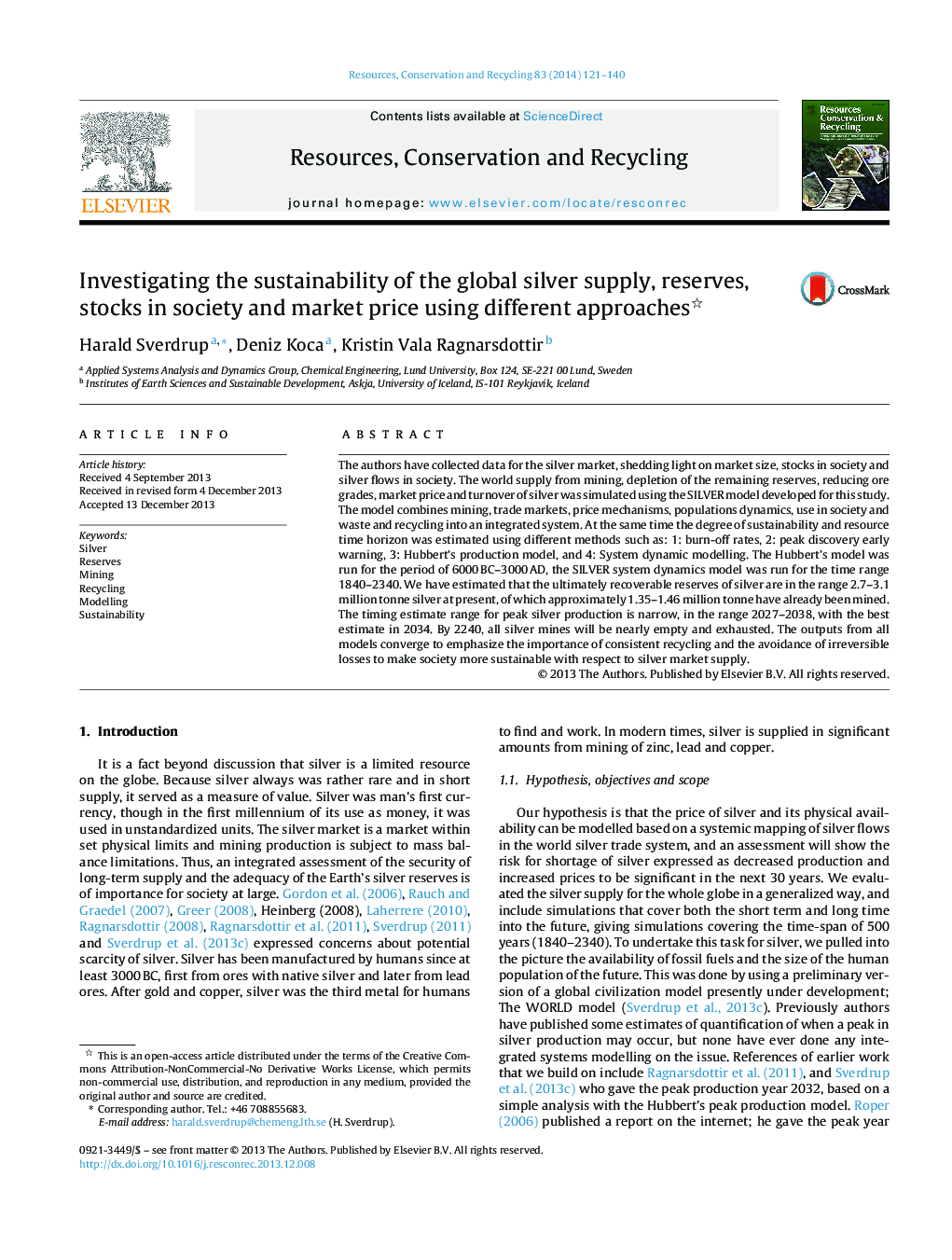| Article ID | Journal | Published Year | Pages | File Type |
|---|---|---|---|---|
| 7495520 | Resources, Conservation and Recycling | 2014 | 20 Pages |
Abstract
The authors have collected data for the silver market, shedding light on market size, stocks in society and silver flows in society. The world supply from mining, depletion of the remaining reserves, reducing ore grades, market price and turnover of silver was simulated using the SILVER model developed for this study. The model combines mining, trade markets, price mechanisms, populations dynamics, use in society and waste and recycling into an integrated system. At the same time the degree of sustainability and resource time horizon was estimated using different methods such as: 1: burn-off rates, 2: peak discovery early warning, 3: Hubbert's production model, and 4: System dynamic modelling. The Hubbert's model was run for the period of 6000Â BC-3000Â AD, the SILVER system dynamics model was run for the time range 1840-2340. We have estimated that the ultimately recoverable reserves of silver are in the range 2.7-3.1 million tonne silver at present, of which approximately 1.35-1.46 million tonne have already been mined. The timing estimate range for peak silver production is narrow, in the range 2027-2038, with the best estimate in 2034. By 2240, all silver mines will be nearly empty and exhausted. The outputs from all models converge to emphasize the importance of consistent recycling and the avoidance of irreversible losses to make society more sustainable with respect to silver market supply.
Related Topics
Physical Sciences and Engineering
Energy
Renewable Energy, Sustainability and the Environment
Authors
Harald Sverdrup, Deniz Koca, Kristin Vala Ragnarsdottir,
